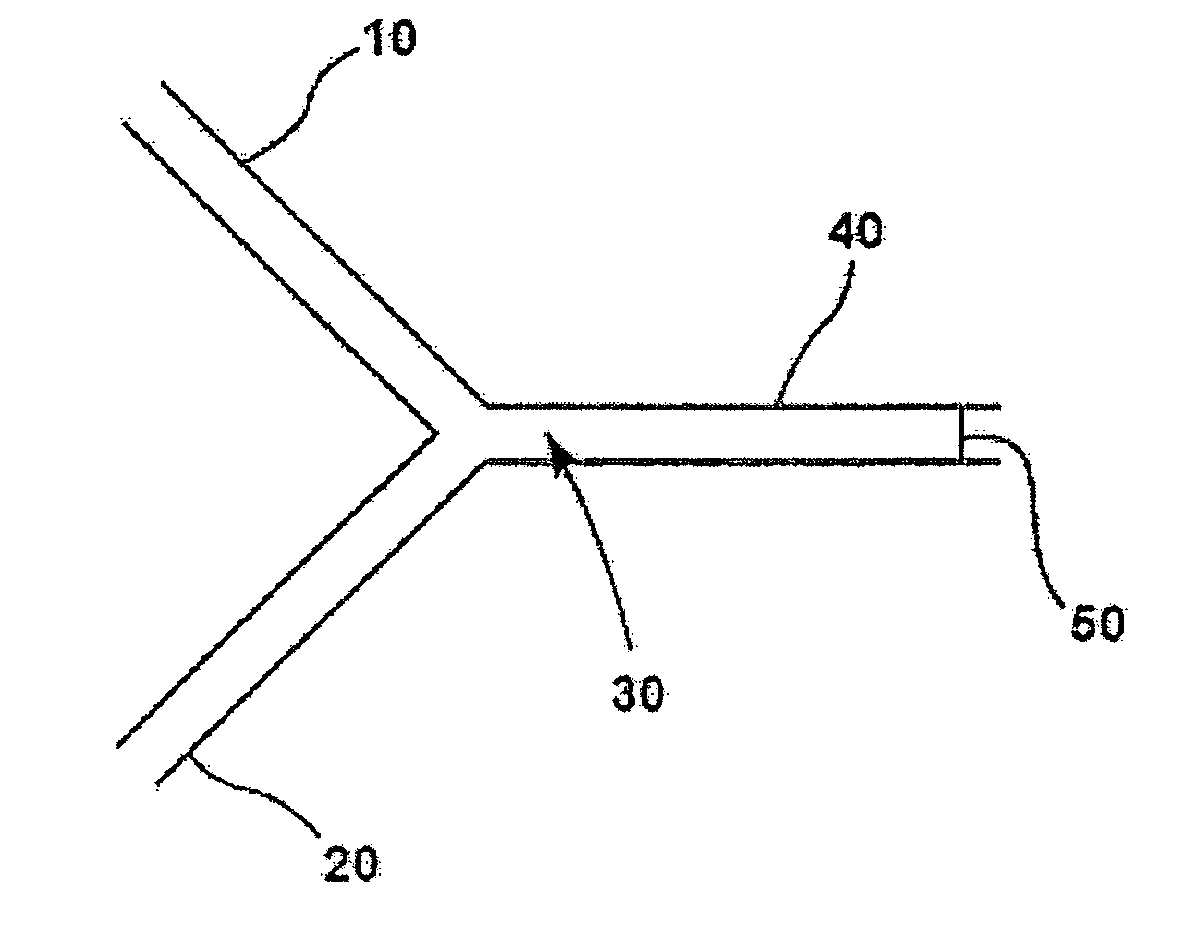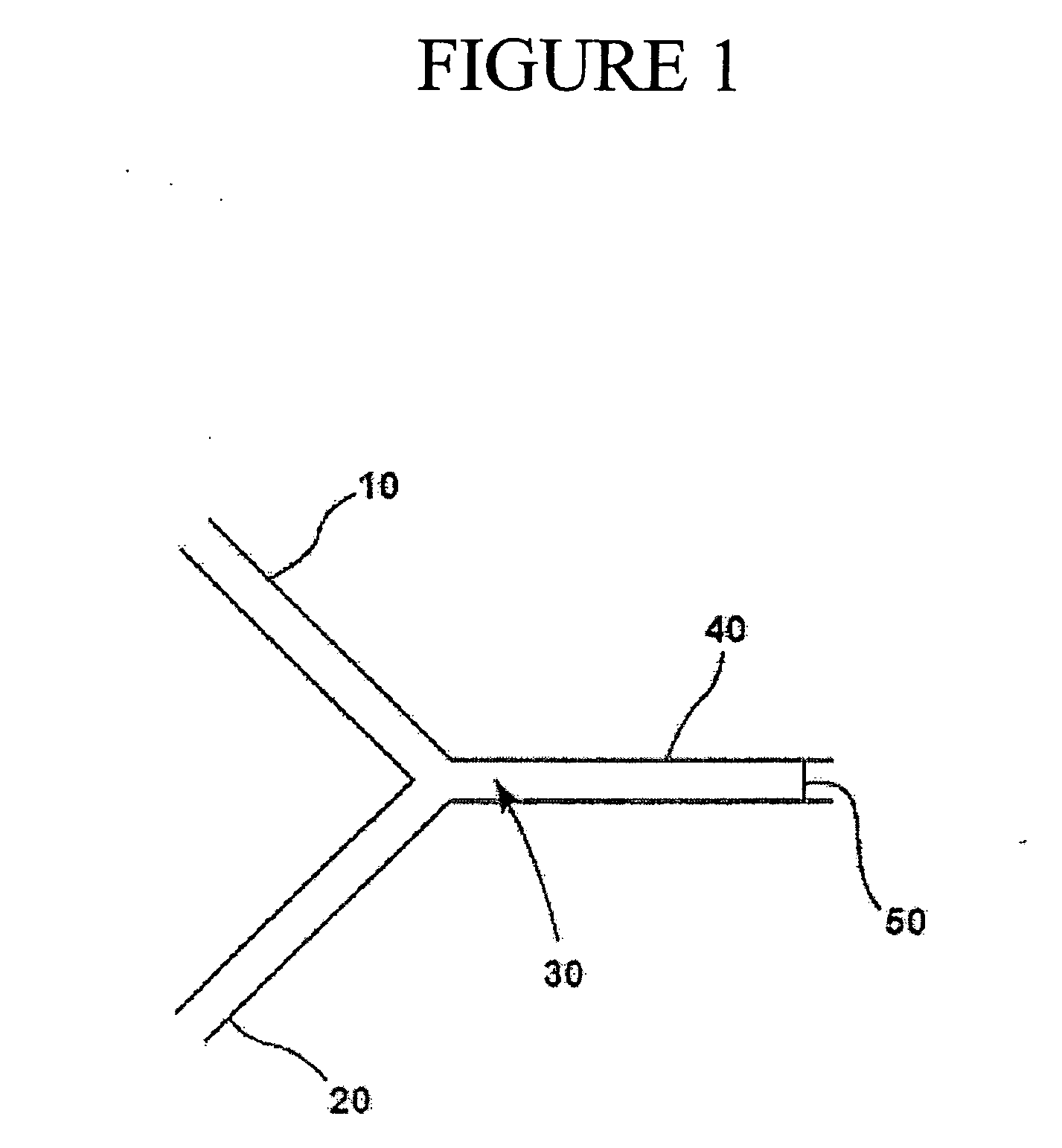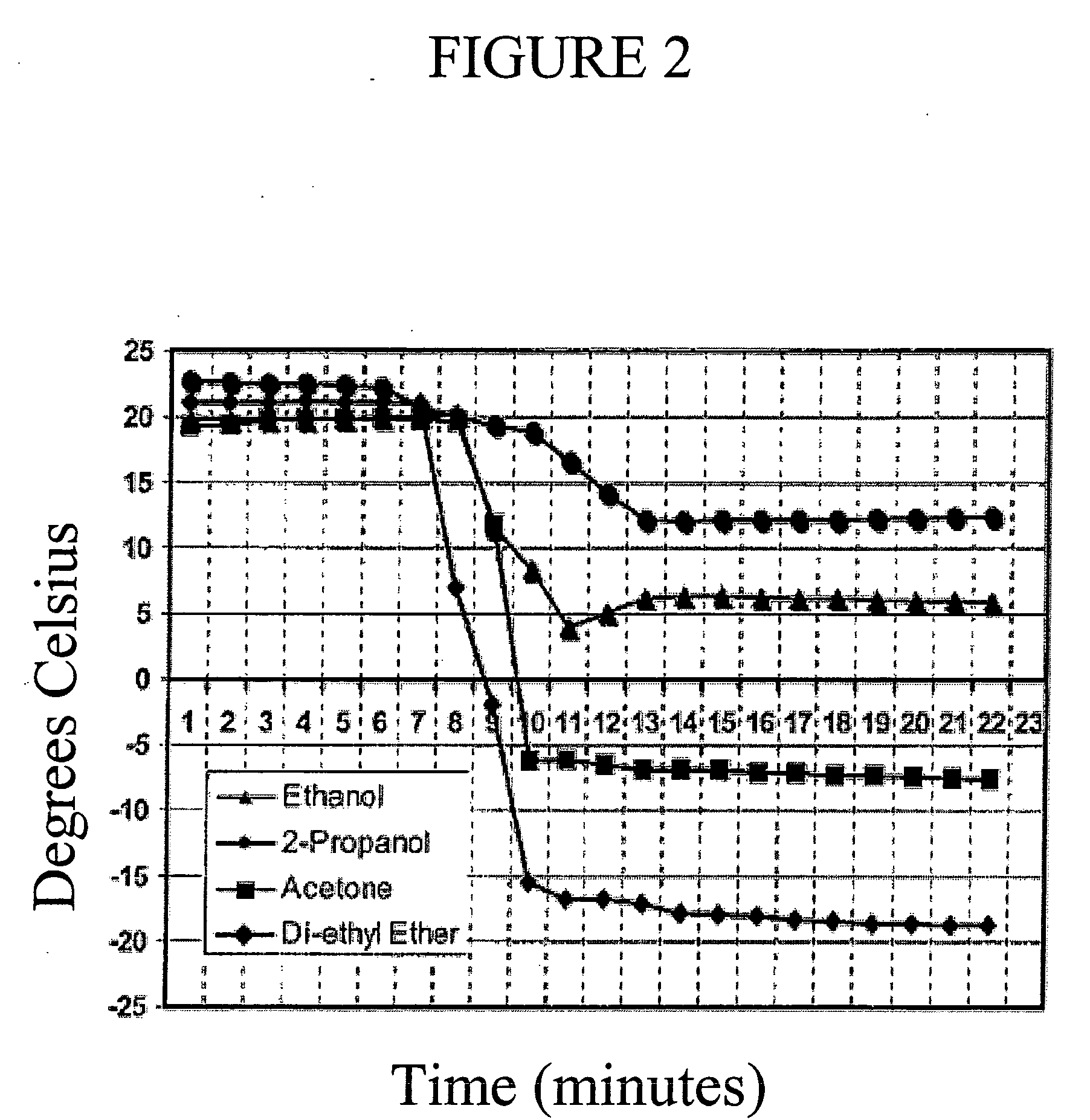Integration of evaporative cooling within microfluidic systems
a technology of microfluidic systems and evaporative cooling, which is applied in the direction of combustion-air/fuel-air treatment, heating types, lighting and heating apparatuses, etc., can solve the problem of difficult local refrigeration to cool a device which is a part of or proximal to that devi
- Summary
- Abstract
- Description
- Claims
- Application Information
AI Technical Summary
Benefits of technology
Problems solved by technology
Method used
Image
Examples
example 1
Fabrication of the Wax Molds and PDMS Y-Junction
[0026] In a preferred embodiment of the present disclosure, a method for fabricating an apparatus for evaporative cooling is provided comprising the steps of first forming molds using a wax printer. To obtain the wax design, a three-dimensional modeling tool was used (SolidWorks) and then converted to a usable file format using SolidScape's ModelWorks software. The wax molds of the fluidic channels were created using a SolidScape T66 wax printer. The wax molds were then chemically cured (to remove unwanted wax) with Petroferm BioactVS-0 Precision Cleaner, and thermally cured by heating overnight at 37 degrees Celsius.
[0027] 184 Polydimethylsiloxane (PDMS) elastomer from Sylgard Dow-Coming was mixed in a Keyence Hybrid Mixer HM501 to form the fluidic channels. A first layer of PDMS was cured first with degassing in a vacuum chamber for 10 minutes and then at 80 degrees Celsius. A second thinner layer of PDMS was then applied to the fi...
example 2
Assembly of Y-Junction Evaporative Cooling Apparatus
[0028] The resulting PDMS Y-junction was then attached to a refrigerant through one arm channel and to nitrogen gas inlets through the second arm channel. An Omega Precision fine wire, k-type thermocoupler was inserted into the outlet of the fluidic channel. This thermocoupler has a diameter of 0.125 mm, thus it is small enough that it does not interfere with the outlet of refrigerant or gas. The thermocoupler was attached to an Omega iSeries i / 32 temperature controller to measure and log the temperature at a rate of approximately three times per second. Temperature measurements were made using the controller interfaced with a computer via a serial port and Microsoft HyperTerminal. The inlet pressures of the refrigerant and the gas were monitored by digital pressure meters (TIF Instruments).
example 3
FIG. 2
[0029] As shown in FIG. 2, the lowest refrigeration temperature amongst four refrigerants (diethylether, isopropanol, acetone and ethanol) was obtained using diethyl ether, when the nitrogen gas was applied at 21 psi and the angle between the two arm channels was 10 degrees.
PUM
 Login to View More
Login to View More Abstract
Description
Claims
Application Information
 Login to View More
Login to View More - R&D
- Intellectual Property
- Life Sciences
- Materials
- Tech Scout
- Unparalleled Data Quality
- Higher Quality Content
- 60% Fewer Hallucinations
Browse by: Latest US Patents, China's latest patents, Technical Efficacy Thesaurus, Application Domain, Technology Topic, Popular Technical Reports.
© 2025 PatSnap. All rights reserved.Legal|Privacy policy|Modern Slavery Act Transparency Statement|Sitemap|About US| Contact US: help@patsnap.com



